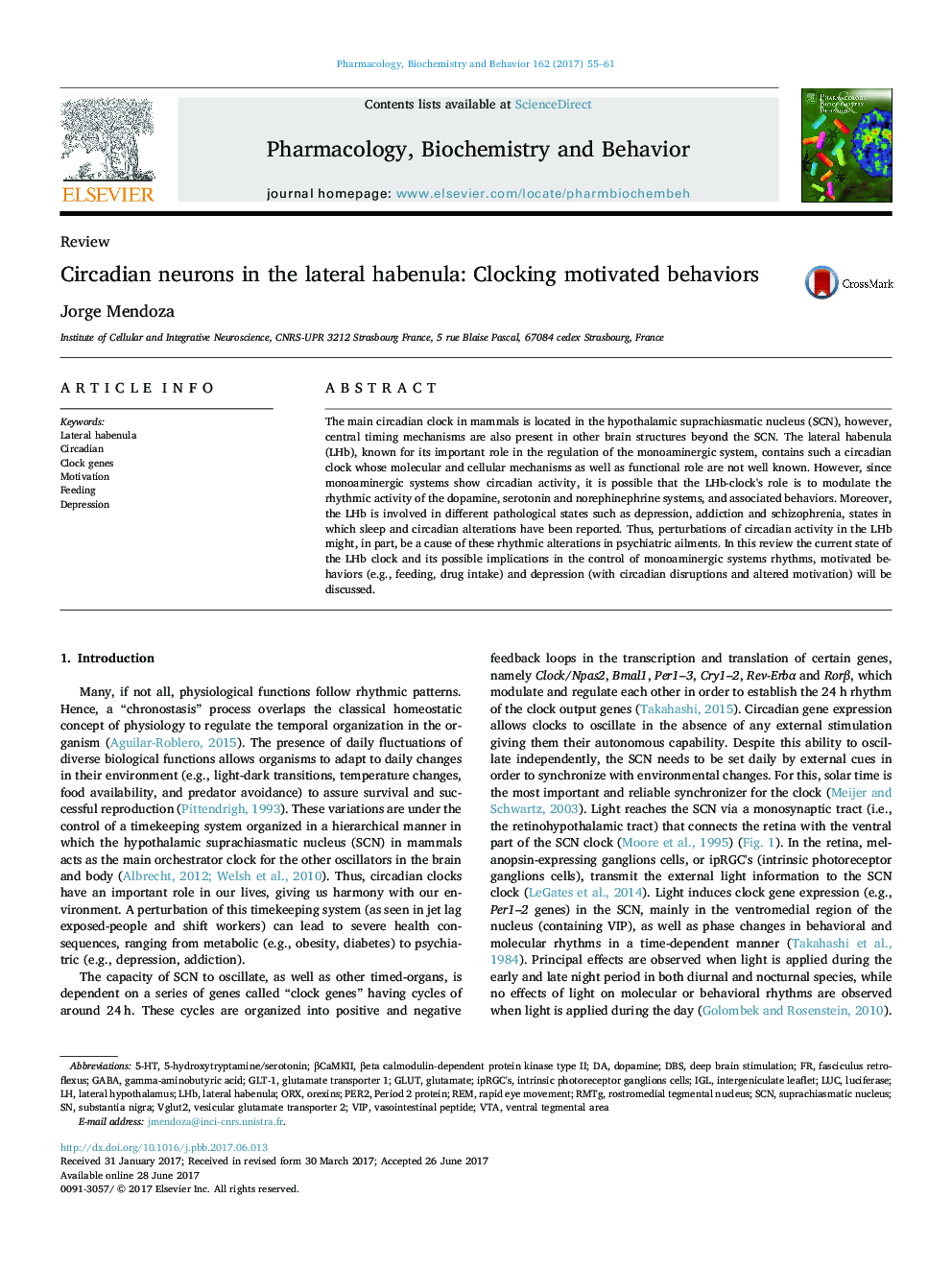| Article ID | Journal | Published Year | Pages | File Type |
|---|---|---|---|---|
| 8350203 | Pharmacology Biochemistry and Behavior | 2017 | 7 Pages |
Abstract
The main circadian clock in mammals is located in the hypothalamic suprachiasmatic nucleus (SCN), however, central timing mechanisms are also present in other brain structures beyond the SCN. The lateral habenula (LHb), known for its important role in the regulation of the monoaminergic system, contains such a circadian clock whose molecular and cellular mechanisms as well as functional role are not well known. However, since monoaminergic systems show circadian activity, it is possible that the LHb-clock's role is to modulate the rhythmic activity of the dopamine, serotonin and norephinephrine systems, and associated behaviors. Moreover, the LHb is involved in different pathological states such as depression, addiction and schizophrenia, states in which sleep and circadian alterations have been reported. Thus, perturbations of circadian activity in the LHb might, in part, be a cause of these rhythmic alterations in psychiatric ailments. In this review the current state of the LHb clock and its possible implications in the control of monoaminergic systems rhythms, motivated behaviors (e.g., feeding, drug intake) and depression (with circadian disruptions and altered motivation) will be discussed.
Keywords
Fasciculus retroflexusvasointestinal peptide5-hydroxytryptamine/serotoninGLUTrostromedial tegmental nucleusRMTgLHbSCNVGLUT2ORXDBSREMVTA5-HTLUCGLT-1VIPPer2gamma-aminobutyric acidDepressionMotivationOrexinsIGLdeep brain stimulationFeedingsubstantia nigraintergeniculate leafletrapid eye movementvesicular glutamate transporter 2lateral habenulaDopaminecircadianluciferaseventral tegmental areaSuprachiasmatic nucleuslateral hypothalamusClock genesGABAglutamateglutamate transporter 1
Related Topics
Life Sciences
Biochemistry, Genetics and Molecular Biology
Biochemistry
Authors
Jorge Mendoza,
